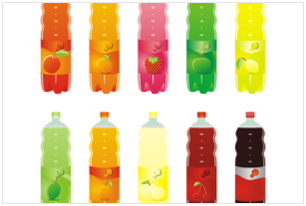High Fructose syrup
Product name:High Fructose syrup F42,F55,F90
Package:300kg Drum,25kg tin
Applications:
1.sweeteners that mostly replaced sucrose (table sugar) in the food industry
2.used most commonly in soft drinks, is comparable to sucrose
3.used illegally to "stretch" honey.
4.HFCS became a sucrose replacement for honey bees
Where does HFCS come from?
HFCS is derived from corn starch. Starch itself is a chain of glucose (a simple sugar) molecules joined together.
When corn starch is broken down into individual glucose molecules, the end product is corn syrup, which is essentially 100% glucose.
To make HFCS, enzymes are added to corn syrup in order to convert some of the glucose to another simple sugar called fructose, also called “fruit sugar” because it occurs naturally in fruits and berries.
HFCS is ‘high’ in fructose compared to the pure glucose that is in corn syrup. Different formulations of HFCS contain different amounts of fructose.
How much fructose is in HFCS?
The most common forms of HFCS contain either 42 percent or 55 percent fructose, as described in the Code of Federal Regulations (21 CFR 184.1866), and these are referred to in the industry as HFCS 42 and HFCS 55. The rest of the HFCS is glucose and water. HFCS 42 is mainly used in processed foods, cereals, baked goods, and some beverages. HFCS 55 is used primarily in soft drinks.
Sucrose (sugar), the most well-known sweetener, is made by crystallizing sugar cane or beet juice. Sucrose is also made up of the same two simple sugars, glucose and fructose, joined together to form a single molecule containing one glucose molecule and one fructose molecule, an exact one-to-one ratio.
The proportion of fructose to glucose in both HFCS 42 and HFCS 55 is similar to that of sucrose. The primary differences between sucrose and the common forms of HFCS are:
HFCS contains water.
In sucrose, a chemical bond joins the glucose and fructose. Once one eats, stomach acid and gut enzymes rapidly break down this chemical bond.
In HFCS, no chemical bond joins the glucose and fructose.
Other nutritive sweeteners can vary in their fructose content (by “nutritive,” we mean that the sweetener contains calories). Honey is a common nutritive sweetener with an approximately one-to-one ratio of fructose to glucose. Fruit and nectar-based sweeteners may have more fructose than glucose, especially those that come from apples and pears.
High-fructose corn syrup, also known as glucose-fructose, isoglucose and glucose-fructose syrup, is a sweetener made from corn starch. As in the production of conventional corn syrup, the starch is broken down into glucose by enzymes. To make HFCS, the corn syrup is further processed by glucose isomerase to convert some of its glucose into fructose. HFCS was first marketed in the early 1970s by the Clinton Corn Processing Company, together with the Japanese Agency of Industrial Science and Technology where the enzyme was discovered in 1965.










